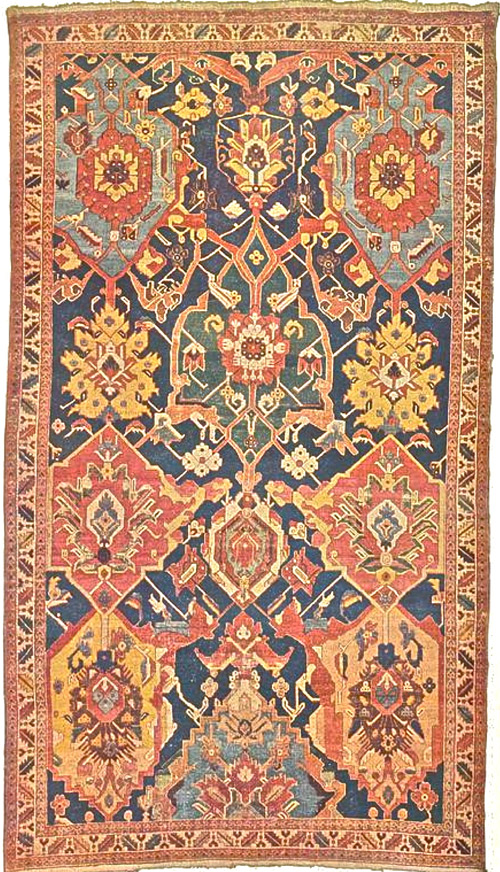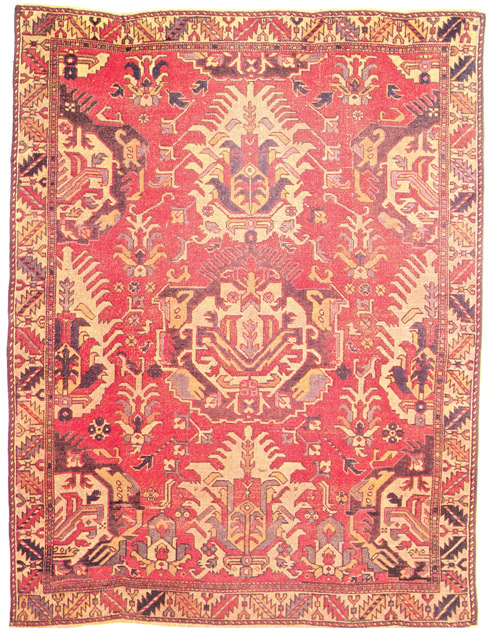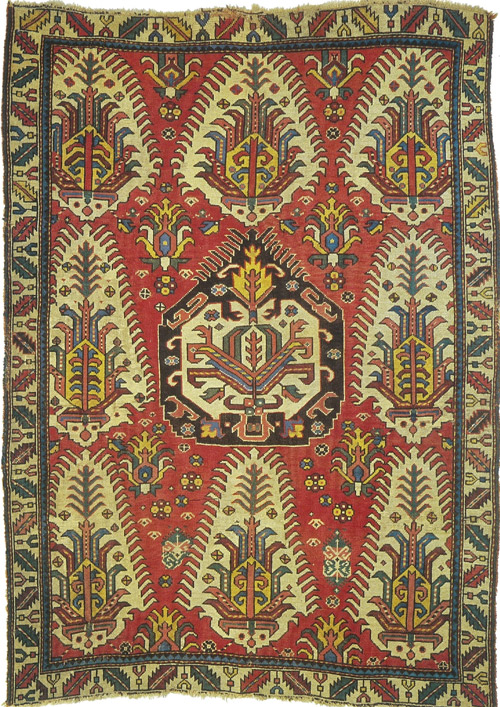Hi Filiberto,
I am not aware of solid clues for the attribution of the «leaf and wineglass» border motif to Anatolia, more precisely to Konya.
But is there any strong reason against the hypothesis that the cradle of this motif was southern Caucasus and that the few older (15th century) extant rugs carrying it were also woven there?
a) As your research has shown Filiberto, after the first quarter of the sixteenth century and until the re-discovery of the Caucasus rugs by European collectors towards the end of the 18th century, European painters stopped using rugs featuring this border as studio props.
b) Extant rugs featuring the leaf and wineglass border, dated between the 16th and the 18th century are very seldom too.
c) Every lover of Caucasian rugs knows that this motif has been extremely popular for local weavers (especially so-called Kazak-, Gendje- and some Karabagh- or Armenian-carpets) during the past two centuries.
d) It is unlikely that the motif could have been imported in the Caucasus for base commercial reasons, since extant rugs dated from the 17th-18th century, thus largely pre-Kustar, already did feature this border motif.

FIG.1. «Karabagh» 17th century. Sarre.

FIG 2. « Kazak?» with blossom pattern, 17th century. Fritz Nagel catal. 286

FIG 3. «Kazak?» 17th-18th century. Kirchheim
(I take no responsibility, nor abuse, because of the proposed origins

)
e) The fact that one of the extant 15th century rugs was found in a Konya mausoleum is not necessarily any proof that it was woven there, is it?
If all these extant and painted rugs were actually woven in southern Caucasus, the lack of painted evidence and / or of extant rug from the early 16th century to the 18th century could reasonably be explained by purely political reasons:
Trebizond (South-west of the Caucasus on the Black Sea) was an important port of call for ships of Venice and Genoa. Until the end of the Ilkanid domination (and of their Pax Mongolica) it was the main terminal of the Silk Road as well. If Caucasian rugs ever were shipped to Europe, it was probably through this commercial trading city populated mainly by Greeks, Armenian, Jews and Georgians.
After the fall of Constantinople to the Ottomans in 1453 this traffic was made increasingly difficult by the Sultan and his growing navy, until Trebizond fell too in 1462. Making these rugs scarce on European markets.

Best regards
Pierre